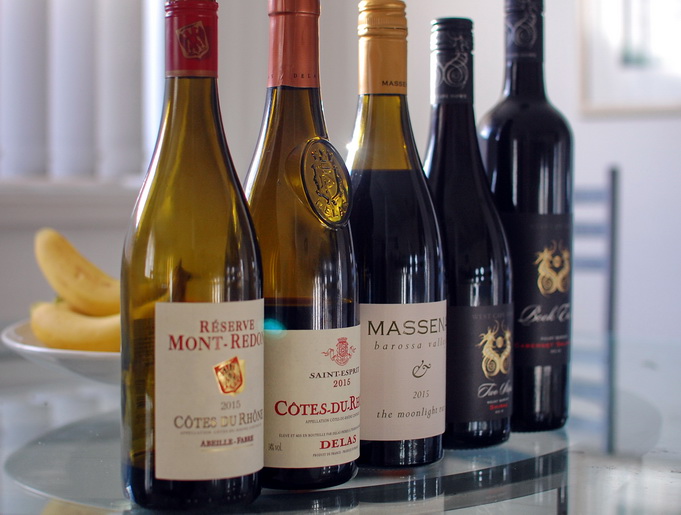Subscribers have asked me how I taste wines.
The process is pretty straightforward:
- I open half a dozen bottles of wine at a time
- I pour some of each wine into a tasting glass
- I taste the whites before they go in the fridge, and after
- I leave the sample wines in the glass for 4 – 5 hours, tasting occasionally (and spitting)
- I drink some of the better wines in the group with dinner
- I repeat the exercise the next evening, and the one after that. I might keep a wine on the bench for another night or two if I’m not sure.

Some more details:
- I put the screwcaps or corks back on after opening
- I keep whites in the fridge, and reds on the bench unless it’s a heatwave
- In a heatwave, the reds go into the fridge as well
- If it’s freezing cold, I warm the reds up a little before tasting them
- In the fridge, half empty bottles of whites will last 4-5 days before losing their shine
- On the bench, half empty reds will last 2-3 days before getting tired (in moderate weather)
Why do I work this way?
Most of our wines are released too young these days, and it often takes a day or two before you can get inside these things for all the youthful bluster that stands in the way. It often takes a day or two for young wines to show their true colours or their true faults. About two thirds of the time, my first impression proves to be correct. One third of the time, the wine either changes for the better or for the worse. Faults tend to show up more clearly after a day or two.
Does that matter, given that 9 out of 10 bottles are consumed on the date of purchase? Maybe not, but therein lies another problem: If you grab a bottle on the way home to have with dinner or on the way to the restaurant, you’ll be drinking it long before it’s had a chance to breathe and open up By the time it does, the bottle will be empty. In this situation, decanting makes a big difference because it aerates the wine and speeds up the process.
Most of our subscribers buy wine to drink next week or next month or next year. If faults develop after a day or two, you can be pretty sure they’ll be there when you open that bottle down the track. More so as a rule, and faults rarely disappear. By the same token, the extra qualities a wine reveals with time in the open bottle will most likely be more obvious when you open the bottle down the track.
Is it a more reliable way to assess wines?
I don’t think there is a reliable way to assess wines, but I suspect that tasting 6 wines over 2-3 days is more thorough than tasting 200 wines in a morning. That’s what the judges do at our wine shows, and that explains how $6 wines win major bling. As I wrote in a recent post headed Wine Shows: Rivers of Gold or Rivers of Tears?, even judges complain about these outcomes.
A man has to know his limitations, and I’m old enough and wise enough to know mine. I’m also blessed with a wife who has a terrific natural palate, but has little interest in wine aside from enjoying it which makes her a ‘naïve’ taster. By that I mean she has no preconceived ideas about styles or brands, and can approach wines with an open mind, and that’s why I value her impressions.
Is wine tasting junk science?
Californian winemaker Robert Hodgson has run wine judging experiments for a decade or more. His conclusion? ‘The results are disturbing. Only about 10% of judges are consistent, and those judges who were consistent one year were ordinary the next year. According to this article in the Guardian, the judges we’re talking about were the ‘who’s who of the American wine industry from winemakers, sommeliers, critics and buyers to wine consultants and academics.’
Of course personal preferences come into it as well, as do our expectations of wine styles. I’m not fond of big reds, more on that in Aussie Reds – so much alcohol, so little finesse. I also prefer Cabernet to Shiraz, and I like them medium-bodied. I’ve had some great 60 / 40 blends of both. I like richer Chardonnays, and don’t like my Pinot Noirs too thin and ethereal. I’m wary of new varieties in fashion. I’m a sucker for a crisp and crunchy Riesling, or a mature one. And so on.
Let’s keep it real
Kim
